A Comprehensive Guide: Customer Satisfaction Survey

Consumers often talk about bad customer experiences more than good ones. Understanding customer satisfaction survey data is key for businesses to Improve consumer satisfaction and it can provide useful insights.
In this post, we’ll cover:
- What is a Customer Satisfaction Survey
- Why do a Customer Satisfaction Survey
- How do I Measure Customer Satisfaction
- Types of Customer Experience Surveys
- How to Create a Customer Satisfaction Survey
- Types of Customer Satisfaction Survey Questions
- Improve Customer Satisfaction with SurveySlack
What is a Customer Satisfaction Survey?
A customer satisfaction survey is a way to learn about consumer sentiment toward products and services, as well as overall experience. These surveys are like feedback gold, helping you understand customer preferences, spot trends, design user journeys, and measure how well your solutions are working.
According to HBS, Customer satisfaction and loyalty lead to big returns. Studies show that a 5% increase in customer retention can boost profits by 25% to 95%.
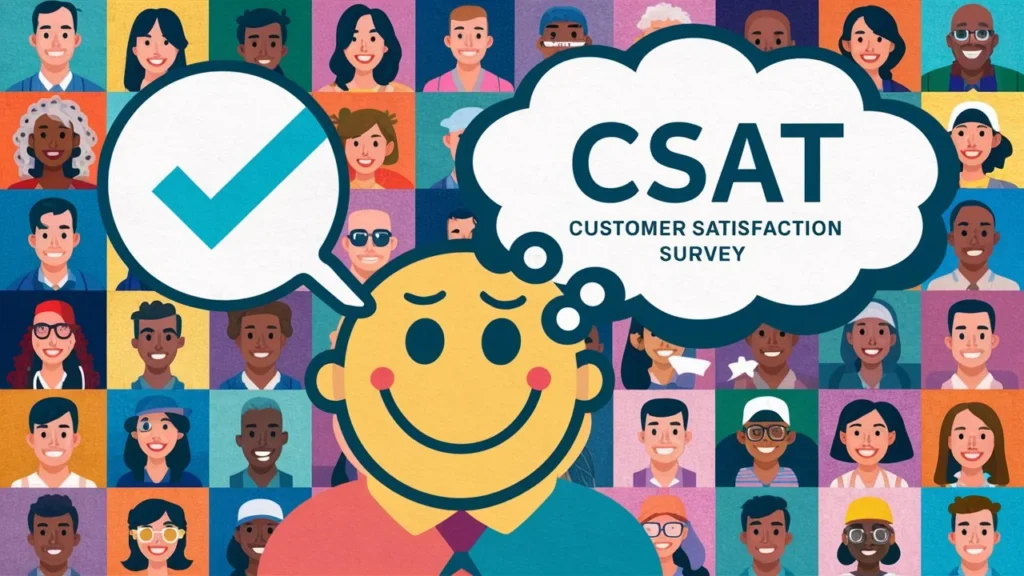
Here are some key things about CSAT surveys:
- Measure Satisfaction: They help businesses understand how well they’re meeting customer expectations.
- Identify Areas for Improvement: By finding out where customers are happy or unhappy businesses can fix those issues. This will improve their offerings.
- Different Formats: CSAT surveys can be short. They have just one or two questions, or they can be more detailed. The detail depends on the information the business needs.
Why do a Customer Satisfaction Survey?
In today’s competitive market, keeping your customers happy is critical. But how do you know how they feel about your business? The Customer Satisfaction survey is crucial to measure the level of satisfaction of customers. Surveys are a powerful tool. Choosing the right survey maker is important and having a free survey maker is a bonus. They help you understand your customer’s experience and areas for improvement.
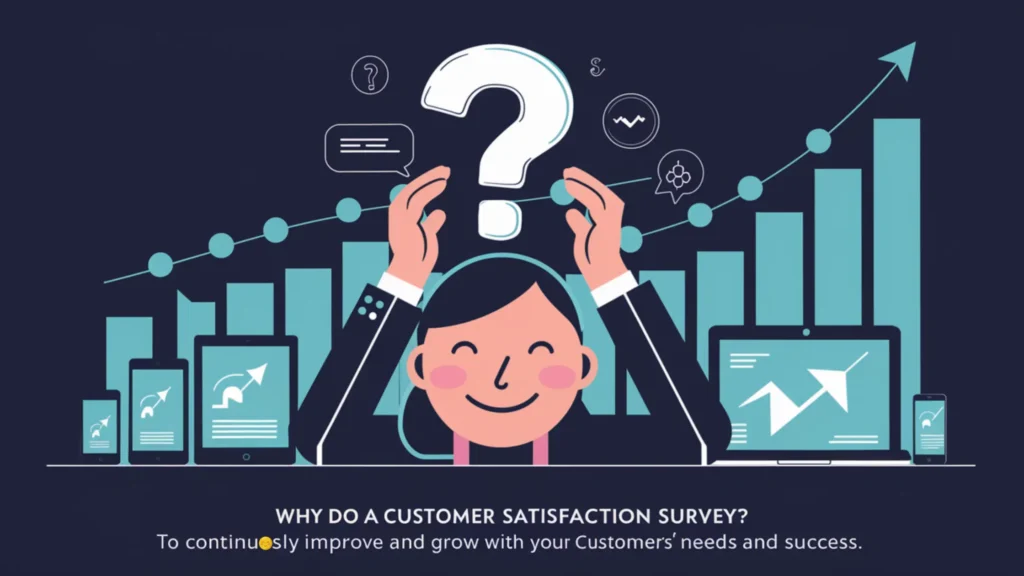
Here are some key reasons why you should be using CSAT surveys:
- Gain Valuable Feedback: CSAT surveys provide a direct line to your customers’ thoughts and feelings. Ask targeted questions. They show what’s working and what needs improvement. They relate to your products, services, or support.
- Make Data-Driven Decisions: CSAT surveys provide quantifiable data to support your business decisions to analyze survey results. Then, you can prioritize improvements based on what matters most to your customers.
- Improve Customer Loyalty: Showing your customers that you value their feedback demonstrates that you care. It shows you care about their experience. This can build trust and loyalty. Repeat business and positive word-of-mouth are both results of it.
- Identify Areas for Improvement: CSAT surveys can help you pinpoint weaknesses in your customer journey. Surveys can help you find these pain points. They could be confusing, a long wait for customer service, or a lack of product features.
- Boost Customer Retention: Retaining existing customers is less expensive than acquiring new ones. Address customer concerns through CSAT surveys. This can stop problems early and keep your customers happy.
Ready to get started with CSAT surveys? The good news is there are plenty of free survey maker tools available online. These tools let you easily make and send surveys to your customers. Many have features to analyze your results.
Adding CSAT surveys to your business strategy. You can get valuable customer insights. You can use them to improve your offerings and build better customer relationships.
Also, read:
How do I Measure Customer Satisfaction?
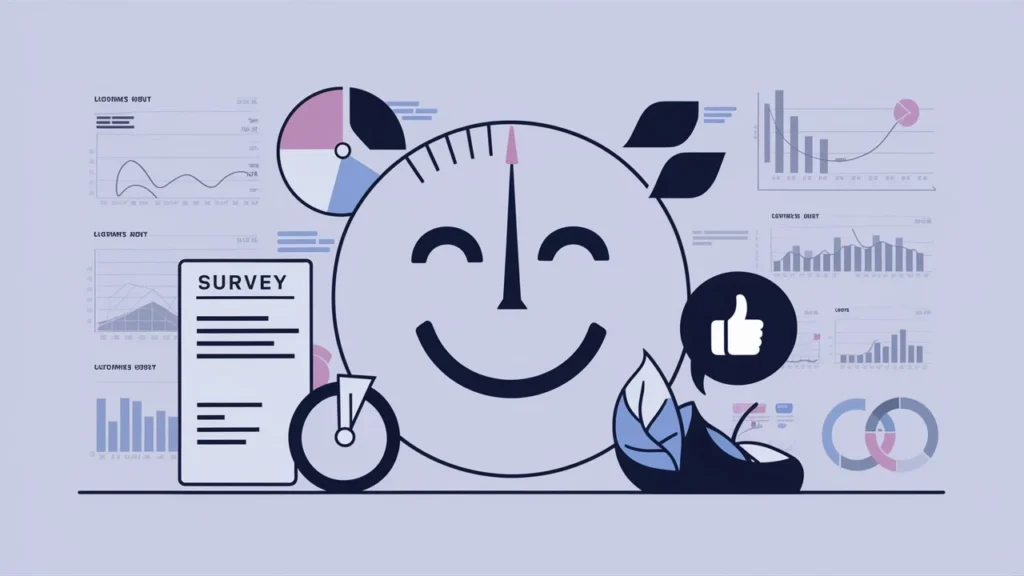
Want to know what truly makes your customers tick? Sure, their satisfaction matters. But, knowing the “why” behind their feelings is key. A customer satisfaction survey is your secret weapon. They uncover how customers see your business. They show the experiences that shape their views.
However, raw feedback can be vague. A structured format, like a 0-10 likelihood to recommend scale, makes it easy to compare responses. You can do this over time. It lets you spot trends in your customer base. This valuable insight empowers you to take action and continuously improve customer satisfaction.
Also, read:
Types of Customer Experience Surveys
There are many ways to measure customer satisfaction and each has their own pros and cons. Below are some popular options broken down for you:

Customer Satisfaction Survey (CSAT):
The most common method is CSAT surveys. They ask customers directly about their satisfaction level. They do this using a rating scale (1-5 stars, Very Satisfied-Very Dissatisfied).
- Pros: Straightforward, easy to implement, provides quantitative data.
- Cons: Limited feedback on reasons behind satisfaction levels.
Net Promoter Score (NPS):
Focuses on the likelihood of recommending your business to others (0-10 scale). Customers are categorized as Promoters (9-10), Passives (7-8), and Detractors (0-6). NPS score is calculated by subtracting % of Detractors from % of Promoters.
- Pros: Simple, actionable metric of customer loyalty, good for benchmarking against competitors.
- Cons: Doesn’t provide specific reasons for satisfaction or dissatisfaction.
Customer Effort Score (CES):
Ask customers how much effort it took to fix their issue or complete a task. Rate it on a scale from “Very Easy” to “Very Difficult.”
- Pros: It shows it’s easy to do business with you. It can find where processes are hard.
- Cons: Limited to specific interactions, may not reflect overall satisfaction.
Other methods:
- Customer Reviews and Feedback: Study online reviews, social media mentions, and direct feedback. This includes emails or calls. You do this to understand customer sentiment.
- Customer Churn Rate: Track the percentage of customers who stop using your service. High churn can indicate dissatisfaction.
- Website Analytics: Monitor user behavior on your website to identify areas of frustration or confusion.
Your specific goals determine the appropriate method to choose. Here are some things to consider:
- What aspects of customer satisfaction do you want to measure? Overall experience? Specific interactions? Likelihood to recommend?
- What level of detail do you need? Do you just want to feel satisfied? Or, do you need to find areas to improve?
- What resources do you have available? CSAT surveys are easy and cheap to do. Other methods may need more time or money.
Use these methods together. They give a full picture of customer satisfaction. You can use them to find areas to improve.
Generate Powerful Customer Satisfaction Questions Now
Stop guessing what your customers want. Get actionable feedback to improve your products and services
How to Create a Customer Satisfaction Survey?
The CSAT surveys are a goldmine they help you understand your customer’s experiences and find areas to improve but to get the best insights, you have to design well and send it as well. Follow these key best practices:
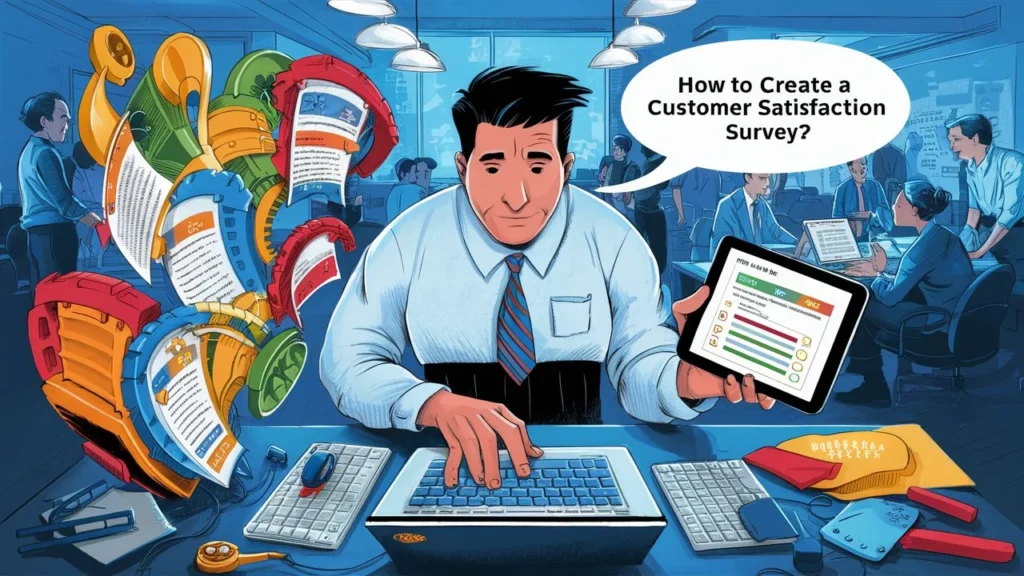
Define Your Goals:
- What aspects of customer satisfaction do you want to measure? Overall experience? Specific touchpoints?
- What do you hope to learn from the survey? Identify areas for improvement, gauge customer loyalty, and understand purchase decisions.
Crafting Your Survey:
- Keep it Short and Sweet: People are busy, so aim for surveys that can be completed in 5-10 minutes. Prioritize the most crucial questions.
- Focus on Clear and Concise Questions: Avoid confusing wording or double negatives. Be specific about what you’re asking.
- Mix-Up Question Types: Try asking different types of questions. These include multiple-choice, rating scales, and open-ended questions. They gather both numbers and details.
- Avoid Leading Questions: Don’t phrase questions in a way that sways respondents towards a particular answer.
Delivery and Timing:
- Send Surveys at the Right Time: Target customers soon after a specific interaction. This could be a purchase, customer service experience, or website visit. It should be while the experience is still fresh in their minds.
- Offer Multiple Channels for Completion: Give customers options. They can complete the survey via email, an online form, or even a text message. They can choose based on their preference.
- Optimize for Mobile Devices: Ensure your survey displays well and is easy to complete on smartphones and tablets.
For Better Responses:
- Incentivize Participation: Consider offering a small reward or discount to encourage survey completion.
- Personalize When Possible: Tailor the survey introduction or specific questions to the customer’s recent experience.
- Thank Respondents for Their Time: Express appreciation for their valuable feedback.
Analyzing and Taking Action:
- Test Your Survey Before Launch: Run a pilot test with a small group to identify any issues with question clarity or flow.
- Analyze Your Data: Don’t just look at the numbers. Find trends and themes in the open-ended responses.
- Take Action on Feedback: Develop a plan to address the issues raised in your surveys. Communicate the changes you’re making based on customer feedback.
Also, Read:
Types of Customer Satisfaction Survey Questions
The surveys rely on many question types. These types gather both specific and general customer sentiment. Here’s a breakdown of some common types of questions used in CSAT surveys:
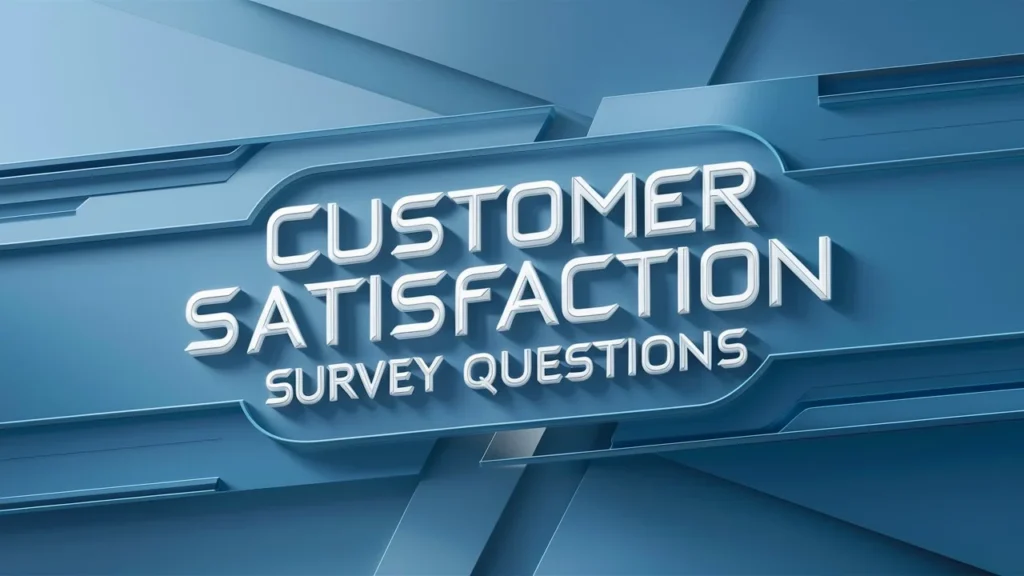
1. Overall Satisfaction Questions:
Get a general sense of customer sentiment with your product, service, or brand.
Examples:
- “How satisfied are you with our overall service?” (Rating scale)
- “On a scale of 1 to 5, how likely are you to recommend us to a friend?” (Net Promoter Score – NPS)
2. Specific Satisfaction Questions:
Target specific touchpoints in the customer journey to pinpoint areas for improvement.
Examples:
- “How easy was it to find the product you were looking for on our website?” (Rating scale)
- “How helpful and knowledgeable was our customer support representative?” (Rating scale)
3. Multiple Choice Questions:
Offer pre-defined answer choices for customers to select from.
Examples:
- “May I inquire about the main reason for contacting customer support today?” (List of reasons)
- “How often do you use our product/service?” (Weekly, Monthly, Rarely, Never)
4. Likert Scale Questions:
Measure customer agreement on a predetermined scale.
Examples:
- “Our checkout is designed for a hassle-free shopping experience.” (Strongly Disagree – Strongly Agree)
- “The quality of our products meets my expectations.” (Strongly Disagree – Strongly Agree)
5. Open Ended Questions:
Allow customers to elaborate on their experiences and provide valuable qualitative feedback.
Examples:
- “What can we do to improve your experience with our product?”
- Do you want to tell us anything else about your recent service interaction?”
Also, Read:
Improve Customer Satisfaction with SurveySlack
SurveySlack is a free survey maker or online survey maker tool and right now it’s in the beta stage. See how our vision can boost customer satisfaction:
Seamless Integration:
- SurveySlack connects integration with third-party tools.
- This makes it easy to send and collect surveys in your existing workflow.
Targeted Surveys:
- SurveySlack lets you target customer segments or individuals for feedback.
- This ensures your surveys are relevant and provide useful insights.
- You can tailor questions based on customer demographics, purchase history, or recent interactions.
Real-Time Feedback:
- SurveySlack facilitates real-time feedback collection.
- Customers can respond to surveys quickly in SurveySlack.
- This leads to higher completion rates.
- This allows you to identify and address customer concerns promptly.
Improved Communication:
- SurveySlack fosters two-way communication.
- You can use SurveySlack to ask follow-up questions.
- These questions can clarify customer responses or give more context.
- This builds stronger relationships and demonstrates that you value their feedback.
Actionable Insights:
- SurveySlack can analyze your survey data and generate reports within.
- You can easily identify trends, areas for improvement, and customer sentiment.
By using SurveySlack strategically, you can gather valuable customer sentiment in real time. This will improve your communication strategy and, in turn, boost customer satisfaction.
Create Your Free Survey
Engage your audience with custom surveys
Conclusion
This guide has explained how to use effectively an online customer satisfaction survey. It helps understand customer views and improve business. Consistently collecting and acting on feedback shows a commitment to improving. It also shows a commitment to keeping current customers and attracting new ones. Prioritizing customer satisfaction through surveys is an investment. It is an investment in the long-term success of a business.



